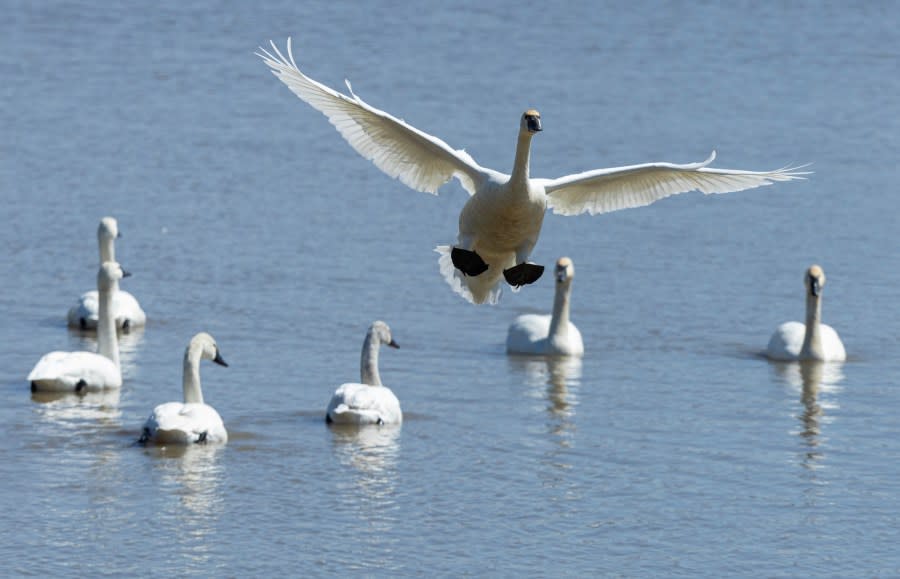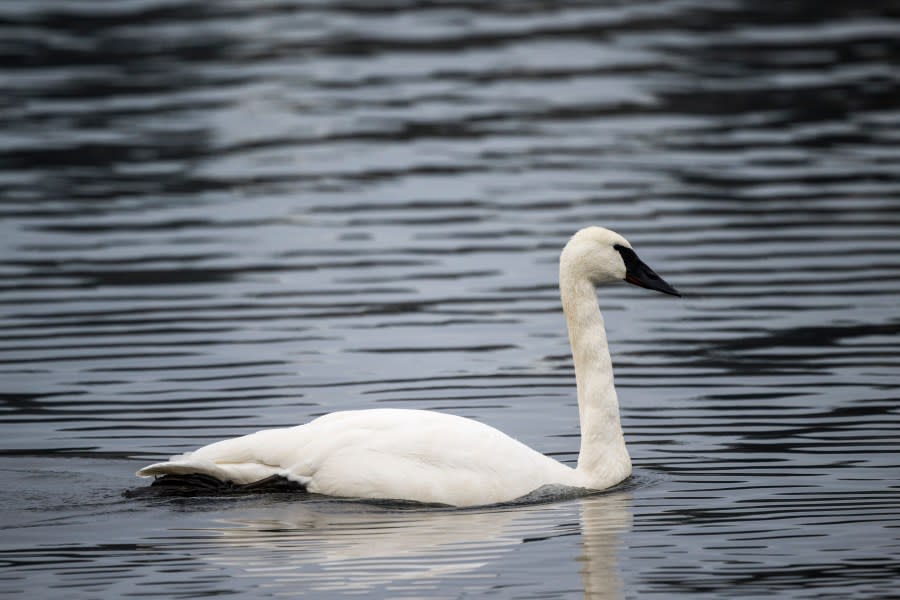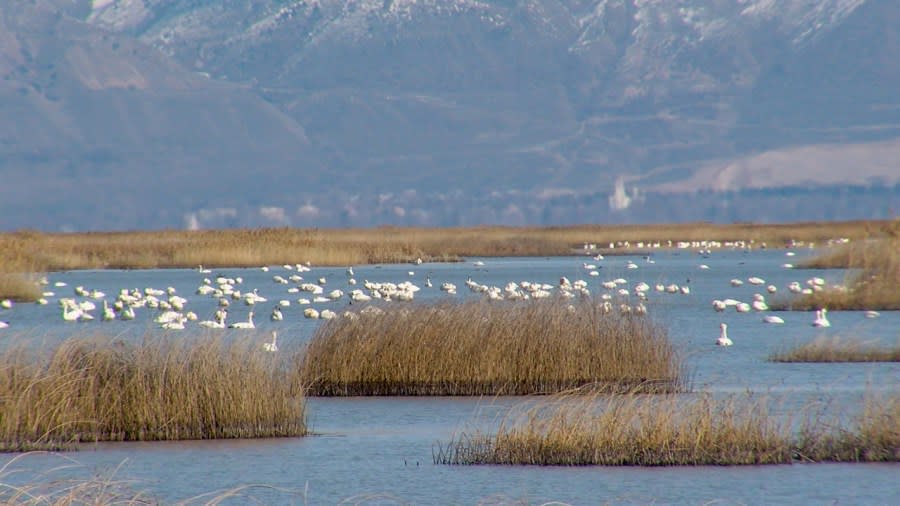Why northern Utah and the Great Salt Lake are critical for migrating swans
SALT LAKE CITY (ABC4) — It’s a sure mark of spring across northern Utah: Hundreds of large swans flying through the skies, landing to feed in the wetlands off the Great Salt Lake.
Throughout March, the annual migration of tundra swans and trumpeter swans brings birders and wildlife enthusiasts flocking to northern Utah, which harbors critical habitat for what are some of the largest waterfowl species in North America.
How to see the ‘magnificent’ swan migration happening in Utah
“Every year when I go out and see them again, it’s just amazing,” said Mark Hadley, northern region outreach manager for the Division of Wildlife Resources. “Wow, those birds are big. They’re just graceful and beautiful.”
Why they fly over Utah
The swans spend the winter months in places like California and southern Utah. But as spring comes on, they begin a journey of thousands of miles to their nesting grounds in the northernmost arctic regions of Canada and Alaska.
“What we’re seeing is swans heading back to the tundra. As their name implies, that’s where they like to nest,” said Anne Terry, director of education at Tracy Aviary in Salt Lake City.
Flocks seen over Utah have been reported to be as large as 1,000 individuals. The reason they course over the Beehive State is because it’s a key waypoint where the birds can find refuge and food.

According to Terry, the swans gather in the freshwater bays around the Great Salt Lake. Using their long necks, they tip into the water and munch on the plants growing up from the bottoms of the bays.
“One more reason to get water to the Great Salt Lake is to keep these wetlands around the lake super healthy, so that birds that are on their migrations can depend on them as they have for thousands and thousands of years,” Terry said.
Tundra or trumpeter?
Most of the swans traveling through Utah this month are tundra swans. A robust and numerous species, their plumage is pure white. Although they are slightly smaller than trumpeter swans, they look pretty much identical.
For a nonexpert, eyeing the difference between a trumpeter swan and tundra swan is almost impossible. However, one can hear the difference.
“The trumpeter swan … has a sound that’s definitely different than a tundra,” Hadley said. “It earned its name, trumpeter.”

Trumpeter swans are the heaviest living bird native to North America, and they are also the continent’s largest waterfowl species. Their wing span can reach up to 10 feet. About 100 years ago, these birds were on the edge of extinction, but their numbers have since rebounded.
Their comeback story is tied to the history of Utah’s Tracy Aviary, which features a trumpeter swan in their logo. According to Terry, the aviary contributed to trumpeter swan breeding programs early on to boost their numbers.
“They were endangered at the time, and now they’ve bounced back so well they are starting to show up in larger numbers in Utah, which is really exciting,” she said, adding that trumpeter swans are still at the aviary today.
Where to see the swans
Perhaps the top spot to see migrating swans in Utah is the Bear River Migratory Bird Refuge, located about 10 miles west of Brigham City in Box Elder County.
The refuge has a 12-mile auto route that runs through the heart of the sanctuary’s 80,000 acres of marshland, open water and mudflats.
“It takes you right through the refuge and you can see lots and lots of swans right from your vehicle,” Hadley said.
On Saturday, March 9, the refuge is hosting its Swan Day, a free event featuring photography workshops, raptors displays and a swan-themed puppet show. Events run from 10 a.m. to 4 p.m.

Another top spot to see migrating swans is the Salt Creek Waterfowl Management Area, which is about 12 miles northwest of Corinne, also in Box Elder County. Per Hadley, birdwatchers can drive onto Compton’s knoll and get a clear hilltop view of the swans out on the marsh.
A bit of advice for those going out to see the swans for the first time: Bring binoculars or a spotting scope.
“Waterfowl tend to hang out in the safest spot for them, which might not be near the shore where you are,” Terry said.
For the latest news, weather, sports, and streaming video, head to ABC4 Utah.

